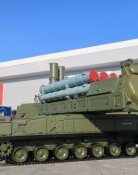[Opinion] Suggestion to Increase Exports
[Opinion] Suggestion to Increase Exports
Posted February. 25, 2002 09:25,
While the net gross domestic production (GDP) of the world has increased 7 times, the trading volume has grown 17 times after the World War II. It is the result of that every country has concentrated on increase of export. Especially, teemed with exporting goods, present world market becomes more competitive among countries.
Consequently, aiming to raise each country`s exports and to increase the profits through trades, many countries increasingly built up economic consolidations between neighboring nations and made free trade agreement (FTA). Already 162 kinds of FTA are in effect and several tens of FTA are in the process of agreement. Although the European Union (EU) and Mexico have made more than 30 kinds of FTA respectively and are enjoying economic benefits, Korea has not contracted any FTA.
The key of the regionalism is that, beyond the multi-lateral regulations of World Trade Organization (WTO), regional nations give and receive mutual preference by reducing tariff and non-tariff walls which are the obstacles of trades. Therefore, offshore nations should submit to the relative disadvantage of discriminative treatment. And, the spread of regionalism means that Korean exporting goods will face more disadvantages in the exporting market.
According to the world trade statistics, deepening the economic consolidation, exporting rate within the EU countries reached 63.5 percent in 2000. After launching the North American Free Trade Agreement (NAFTA), the exporting rate within the North American region has increased from 40.6 percent in 1990 to 54.1 percent in 2000. Therefore, the cases that Korean competitive goods cannot enter into the foreign markets will increase.
Reflecting on these situations, recently there are active discussions about the FTA in Korea. Although it seems to be late, it is a good sing for Korean economy. However, because Korea`s discussions about the FTA are in an introductory level, various circles` efforts are needed to develop them. Then, what kinds of effort are needed for the successful promotion of the FTA?
First, the government should clearly present its will to drive the FTA forward. The promotion of the FTA has two sides, outwardly the government has to negotiate with other countries, and inwardly it should make a consensus through persuasion of concerned parties. Therefore, the government must set up the basic direction and goal, make elaborate preparations, and form a public opinion.
For the sake of these, the government needs to shape the system, such as the enactment of a special law for the promotion of the FTA or establishment of a pan-governmental level of organization. It also has to collect the opinions of all circles, including the industrial and academic circles. The government and the private should try to produce more number of the FTA experts.
Second, multilateral measures on the opening of the agricultural market are needed. As it happened in the Korea-Chile FTA negotiation, the conclusion of a FTA is practically hard without considering the opening of the agricultural market. The agricultural policy authorities should actively participate in the establishment of the FTA strategies, including the selection of the nations to negotiate, from the beginning because the opening of the agricultural market is one of the big keys in the promotion of the FTA.
The agricultural policy authorities must recognize that the FTA is not an issue of choice but of survive. Thus, it should take a positive stance that the reservation of the agricultural market opening needs to be limited on few items that will widely damage the domestic agricultural business. If it will try to reserve the market opening of the agricultural goods which will not highly increased their imported volume, it will sacrifice the whole national interests for the sake of partial benefit.
Last, the function of the industrial circle, as a supporting group for the promotion of the FTA, should be strengthened. In case of the U.S., several organizations, including the `Business Round Table (BRT)` which is consisted with the CEOs of the major companies, ask the expansion of the FTA to the government and parliament. These activities have supported the U.S.` driving power to increase the FTA nations, including Israel, Jordan, Chile, Singapore, and New Zealand, after the launching of the NAFTA. These examples have many implications to Korean industrial circle.
Korea`s export dependency rate to the GDP is 73 percent and it is exceptionally high in the world. Regarding this, Korea is far behind the current of regionalism, which is on the move in the world scale. The flow of the world economy is not avoidable, and the future of Korean economy and the increase of exports depend on how actively we will accept the situations. It is very important time to prepare serious measures and to promote the FTA.
Kim Jae-Chul
Headline News
- Ukraine says N. Korea’s first troops arrive in Kursk
- N. Korea begins installing barriers on Donghae Line after 'bombing show'
- K-defense operating profit expected to jump by 200% in Q3
- Seoul City launches DDP rooftop tours, celebrating 10th anniversary
- Ahn Jung-geun’s historic writings return to Korea in 15 years







